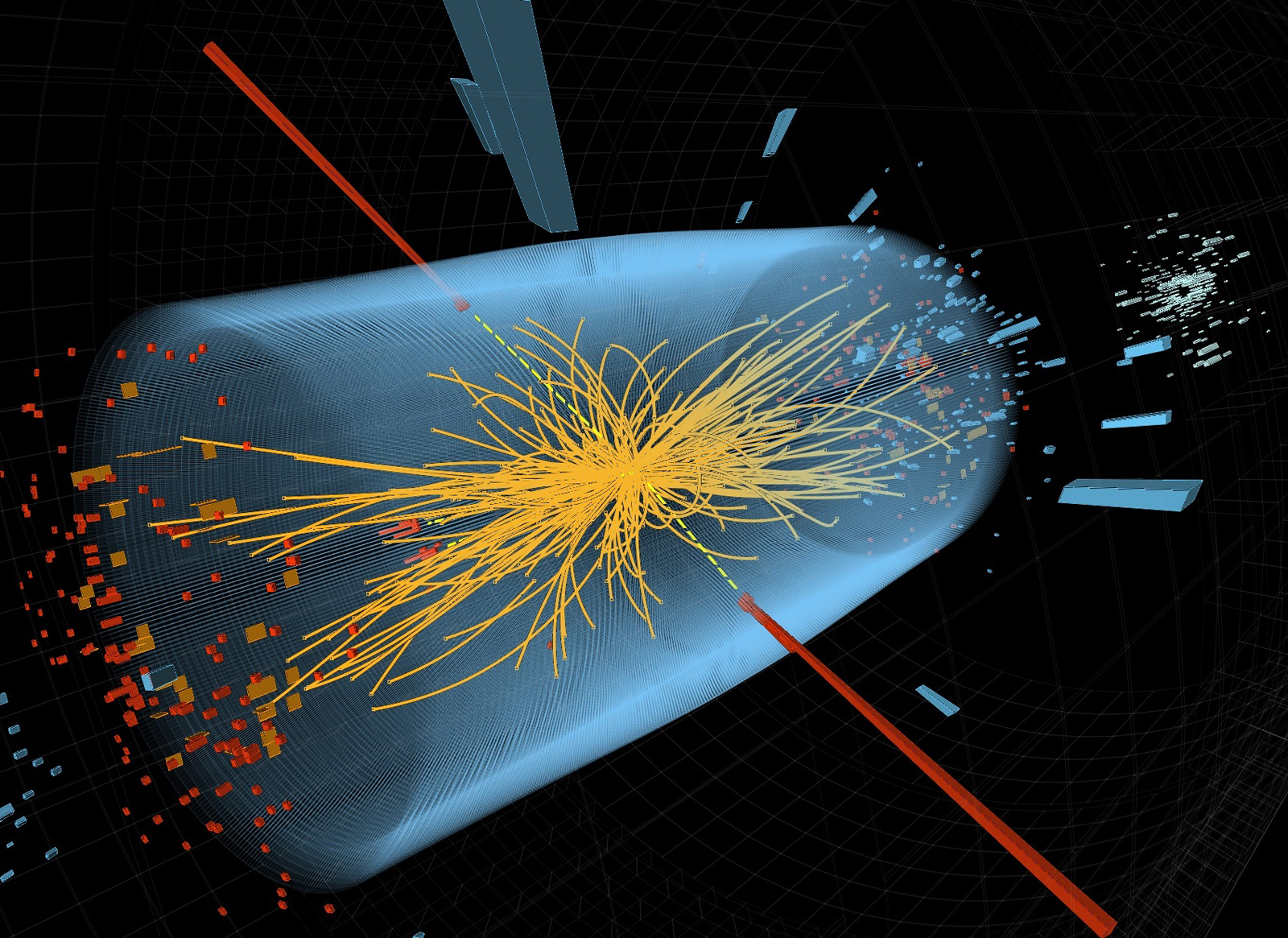Taking a closer look at LHC
The values presented here are essentially what the machine presents, but repairs, improvements and upgrades during long shutdown (LS) cause some of them to vary slightly.
All these parameters have been calculated or introduced in this website.
| Circumference | 26659 m |
| Dipole operating temperature | 1,9 K |
| Lattice type | FODO 2-in-1 |
| Number of arcs (2450 m long) | 8 |
| Number of lattice cells per arc | 23 |
| Number of straight sections (545 m long) | 8 |
| Main RF System | 400.8 MHz |
| Voltage of 400 MHz RF system at 7 TeV | 16 MV |
| Number of magnets (dipoles, quadrupoles ... dodecapoles) |
9300 |
| Number of dipoles | 1232 |
| Number of quadrupoles | 858 |
| Number of RF cavities | 8 per beam |
| Nominal energy, protons | 7 TeV |
| Momentum at collision | 7 TeV/c |
| Momentum at injection | 450 GeV/c |
| Nominal energy, ions | 2,76 TeV/nucleon |
| Peak magnetic dipole field | 8,33 T |
| Current in main dipole | 11800 A |
| Energy density of the LHC magnets | 500 kJ/m |
| Main dipole coil inner diameter | 56 mm |
| Distance between aperture axes (1.9 K) | 194,00 mm |
| Distance between aperture axes (293 K) | 194,52 mm |
| Main Dipole Length | 14.3 m |
| Horizontal force at 8,33 T (inner and outer layer) | 1,7 MN/m |
| Composition of the superconducting alloy | Ni_Ti (47Wt% Ti) |
| Maximum current with NO resistence (1,9 K e 8,33 T) | 17000 A |
| Maximum current with NO resistence (1,9 K e 0 T) | 50000 A |
| Number de strands per cable | 36 |
| Number de Ni-Ti filaments in each strand | 6500 |
| Bending radius | 2803.95 m |
| Minimum distance between bunches | ~7 m |
| Bunch spacing | 25 ns |
| Design Luminosity | 1034 cm-2·s-1 |
| No. of bunches per proton beam | 2808 |
| No. of protons per bunch (at start) | 1,15·1011 |
| Circulating current / beam | 0,54 A |
| Number of turns per second | 11245 |
| Stored beam energy | 360 MJ |
| Stored energy in magnets | 11 GJ |
| Beam lifetime | 10 h |
| Average crossing rate | 31,6 MHz |
| Number of collisions per second | 600 millions |
| Radiated Power per beam (syncrotron radiation) | ~ 6 KW |
| Total crossing angle (collision point) | 300 μrad |
| Emittance εn |
3,75 μm rad |
| Beta function β* |
0,55 m |
|
AUTHORS Xabier Cid Vidal, PhD in experimental Particle Physics for Santiago University (USC). Research Fellow in experimental Particle Physics at CERN from January 2013 to Decembre 2015. He was until 2022 linked to the Department of Particle Physics of the USC as a "Juan de La Cierva", "Ramon y Cajal" fellow (Spanish Postdoctoral Senior Grants), and Associate Professor. Since 2023 is Senior Lecturer in that Department.(ORCID). Ramon Cid Manzano, until his retirement in 2020 was secondary school Physics Teacher at IES de SAR (Santiago - Spain), and part-time Lecturer (Profesor Asociado) in Faculty of Education at the University of Santiago (Spain). He has a Degree in Physics and a Degree in Chemistry, and he is PhD for Santiago University (USC) (ORCID). |
CERN CERN Experimental Physics Department CERN and the Environment |
LHC |
IMPORTANT NOTICE
For the bibliography used when writing this Section please go to the References Section
© Xabier Cid Vidal & Ramon Cid - rcid@lhc-closer.es | SANTIAGO (SPAIN) |



